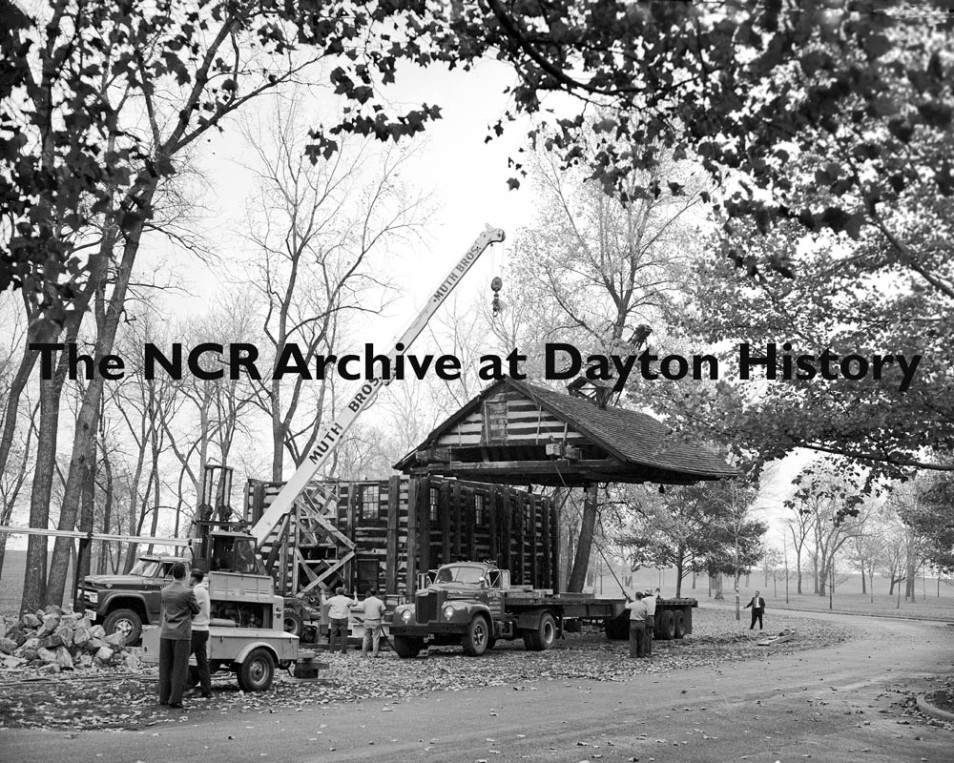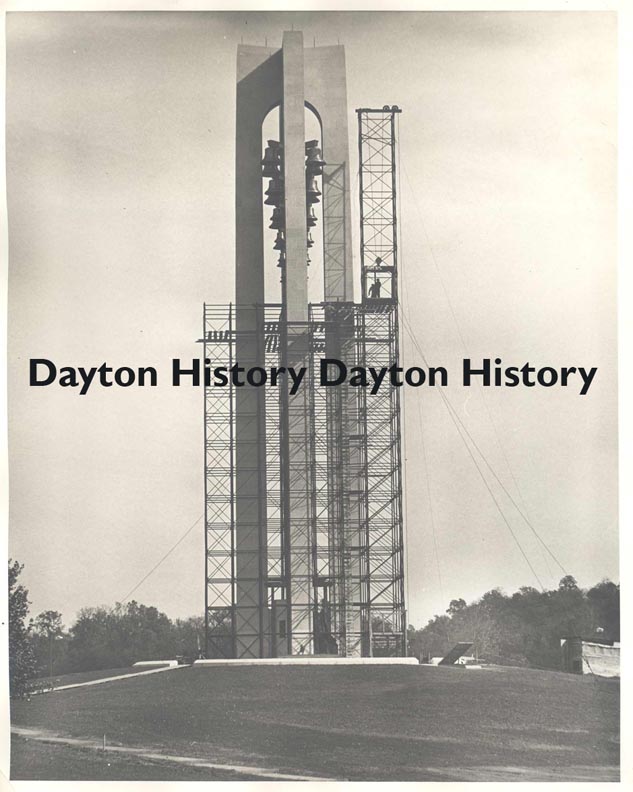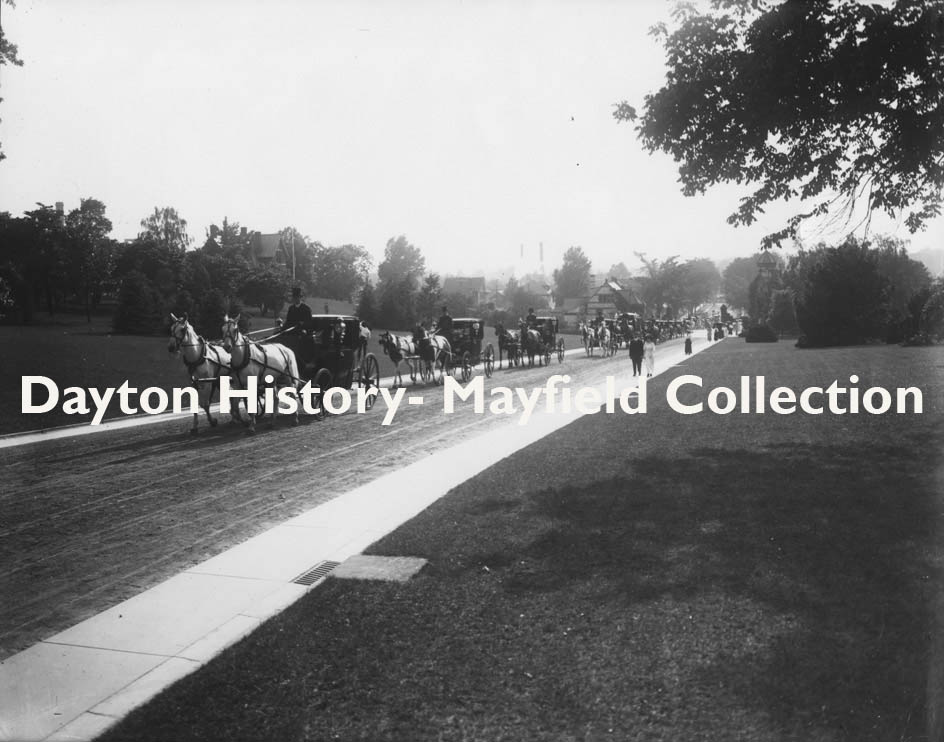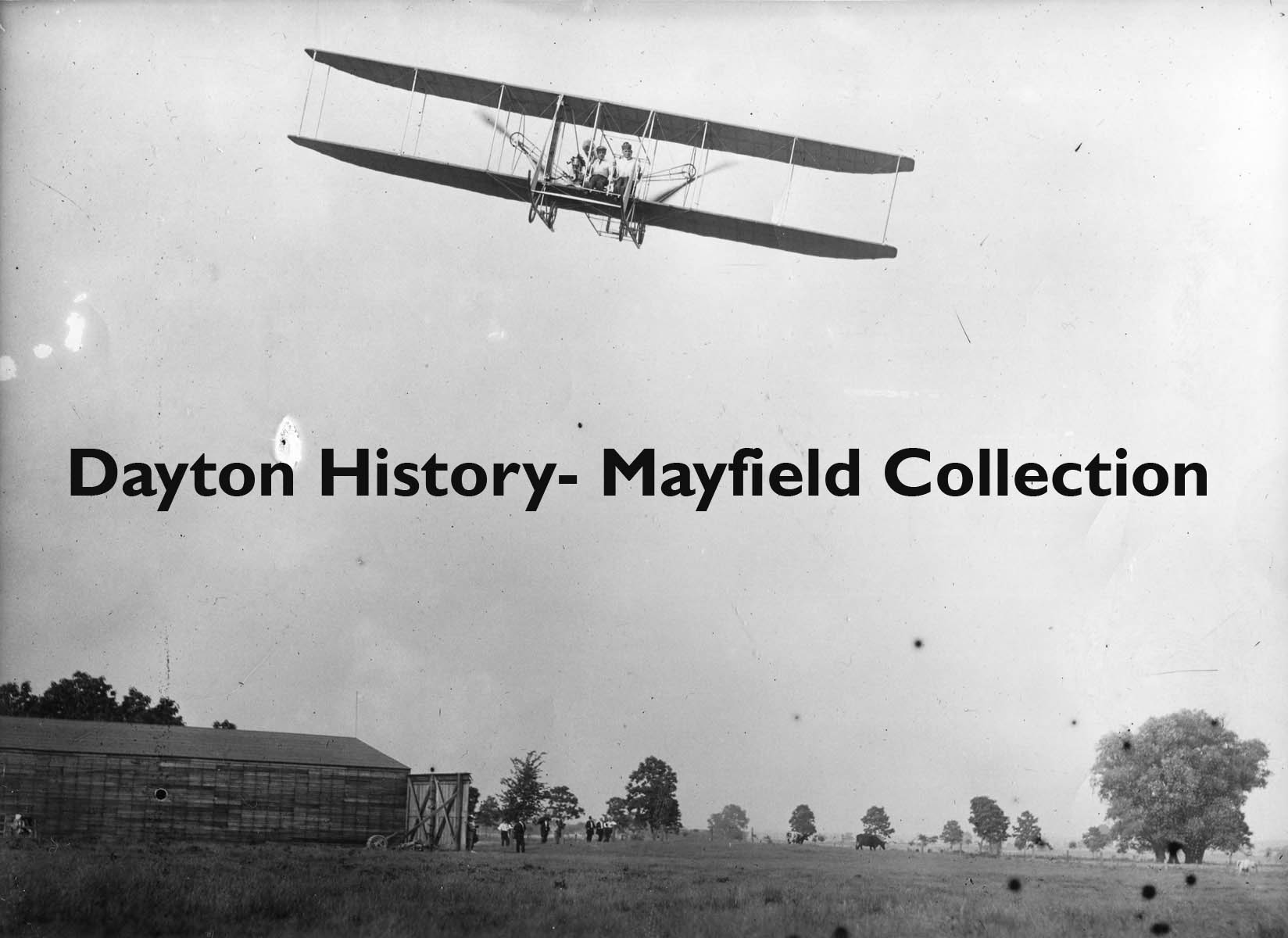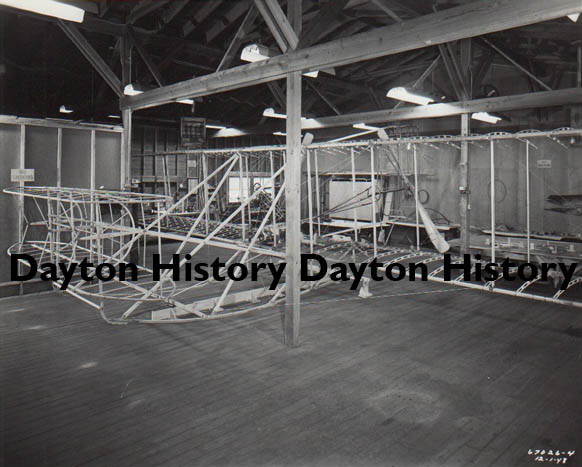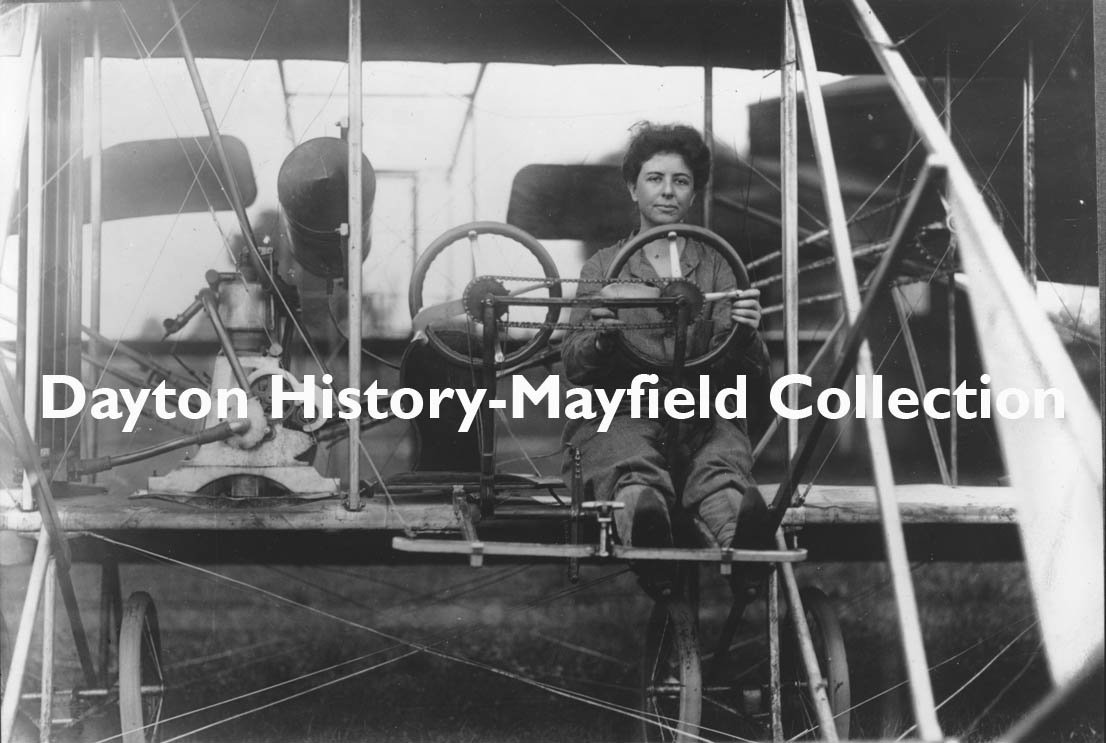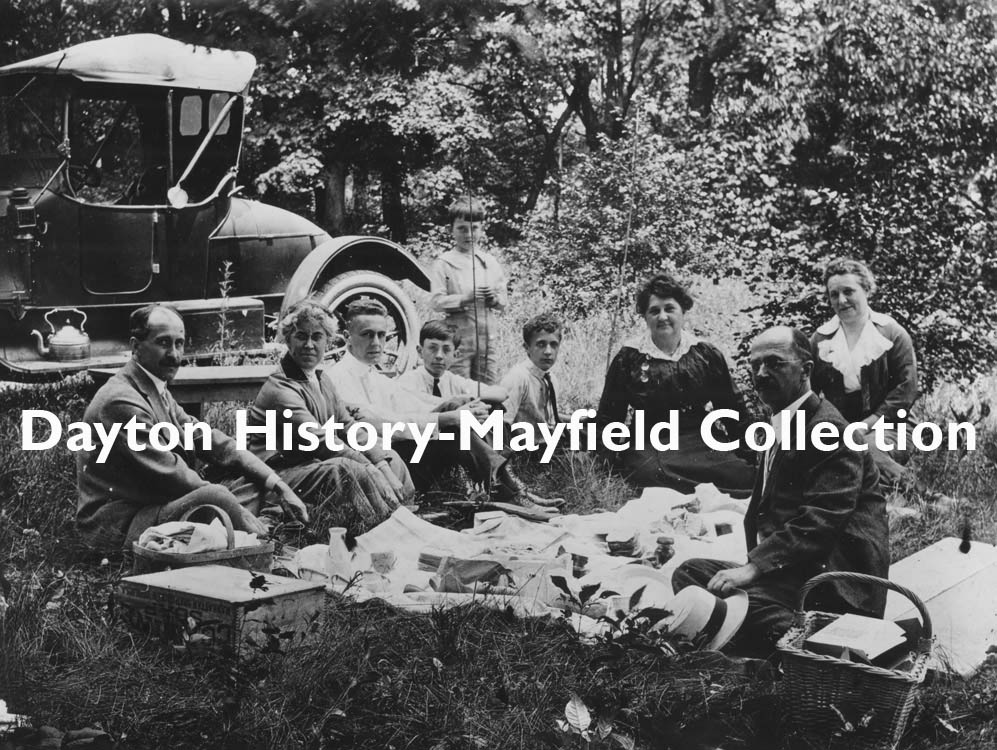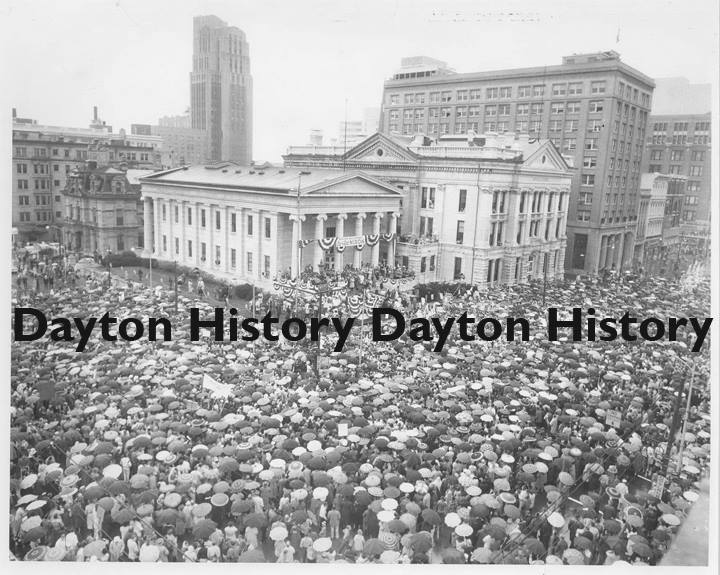ArtiFACT Friday- June 27, 2014
Group of Students Watching the Water-powered Gristmill at Carillon Historical Park, ca. 1950s
As one of the original buildings here at Carillon Park, the Gristmill has provided entertainment for a lot of visitors over the years. The Gristmill has served a duel function over the years: providing both educational insight of a historical process and a place in which the Park’s caretaker could live on-site. Outfitted with an original millstone, the mill is operated by water power provided by the sizable wooden water wheel located on the left side of the structure. A large picture window installed in the lower level of the building allows visitors the opportunity to see how a similar mill would have operated. Seen here are a group of young school children during a tour of the park in the early 1950s, shortly after the park opened. Recently, a group of trained and dedicated volunteers at Carillon Historical Park, constructed and installed a new wooden water wheel for use at the Gristmill. This photo is from the NCR Archive at Dayton History.
To see other historical images from our collection, search our Digital Photo Archive.
ArtiFACT Friday- June 20, 2014
Placing the Roof on Newcom Tavern After the Move to Carillon Park, November 1964
For well over a century now, Newcom Tavern has been touted as ‘Dayton’s Oldest Surviving Building’ and survive it has! Built in 1796 by Robert Edgar for Colonel George Newcom, the structure was originally located at the corner of Main and Monument Streets. In 1895, under threat of demolition, Newcom Tavern was saved by the ‘Log Cabin Committee’ and relocated to Van Cleve Park, a short distance away along Monument Avenue. In the 1960s, it again became necessary to relocate the structure, and it was moved to Carillon Historical Park where it has remained ever since. This photo shows the roof being put back in place on the tavern after its move to the Park. In recent years, a multi-phase project was undertaken in order to preserve the building and return the exterior of the tavern to a more historically accurate appearance. White oak siding, hewn from Ohio-grown oak trees, is being applied to help preserve what remains of the 18th and 19th century timbers. This photo is from the NCR Archive at Dayton History.
To see other historical images from our collection, search our Digital Photo Archive.
ArtiFACT Friday- June 13, 2014
Aerial of Carillon Bell Tower and Grounds, ca. 1940s
For many years, the area now encompassing Carillon Historical Park was bushy swamp land that periodically flooded after heavy rains. Colonel Edward A. Deeds and his wife, Edith, wanted to provide the citizens of Dayton with an opportunity to enjoy the outdoors, listen to beautiful music echoing from the Carillon and learn something of Dayton’s and the Miami Valley’s rich and inventive past. With the help of the Miami Conservancy District and others, the land was transformed into a 65-acre campus that opened to the public in June of 1950. The beautifully-kept grounds were originally designed by the Olmsted Brothers, who had their own influential landscape design firm. Their father was best known for his landscaping design of Central Park in New York City, while the two sons worked on projects like the Biltmore Estate in North Carolina and Piedmont Park in Atlanta, Georgia. Now in its 64th year of operation, the park has grown to include more than 35 historic buildings and structures to tour, hiking trails and sheltered picnic areas for visitors to enjoy. This photograph was taken by Dayton Daily News photographer David Lutes sometime in the mid-to-late 1940s. This photograph is from Dayton History’s Image Collection.
To see other historical images from our collection, search our Digital Photo Archive.
ArtiFACT Friday- June 6, 2014
Carillon Bell Tower During Construction, ca. 1940 to 1942
The first structure built by the then newly formed Educational and Musical Arts, Inc. is the park’s namesake, the Deeds Carillon. Inspired by the historic bell towers Edith Walton Deeds saw during her travels throughout Europe, Dayton’s carillon was originally outfitted with 32 bells, with the largest bell having a diameter of 6 feet. From the terrace, the height of the bell tower stretches over 151 feet into the air and is constructed primarily of Indiana limestone. Deeds Carillon was renovated in 1988, when it was converted to a traditional, mechanical carillon from an electric system. The original chandelier design of the bells was converted to the configuration that can be seen today with a total of 57 bells. On Easter Sunday in 1942, after two long years under construction or the original tower, the carillon bells rang out as the first concert was played by Colonel Edward A. Deeds’ wife, Edith. With this performance, Mrs. Deeds began a long standing tradition that Dayton History carillonneurs continue to this day. This photo is from Dayton History’s Image Collection.
To see other historical images from our collection, search our Digital Photo Archive.
ArtiFACT Friday- May 30, 2014
Funeral Procession for Wilbur Wright, 1912
While traveling to Boston in late April of 1912, Wilbur Wright fell seriously ill, but he was not about to let a lingering illness keep him from his work. Originally diagnosed as malarial fever, it proved to be much worse; Wilbur had contracted typhoid fever. At 3:15 in the morning on May 30th, Wilbur passed away. His father, Bishop Milton Wright, wrote in his diary of his son Wilbur: “A short life, full of consequences. An unfailing intellect, imperturbable temper, great self-reliance and a great modest, seeing the right clearly, pursuing it steadfastly, he lived and died.” Wilbur’s funeral service was held in downtown Dayton at the First Presbyterian Church on June 1st. It was estimated that 25,000 people attended in order to pay their last respects to the fallen local hero. As a final mark of respect, at 3:30 pm, all activity within the city of Dayton ceased and church bells rang out as Wilbur was buried next to his mother at Woodland Cemetery. Pictured here is the funeral procession for Wilbur Wright. Only family and the pallbearers were in attendance at the graveside service. This photograph is from the William Preston Mayfield/Marvin Christian Collection at Dayton History.
To see other historical images from our collection, search our Digital Photo Archive.
ArtiFACT Friday- May 23, 2014
View of Wright Flyer ‘B’ over Huffman Prairie, c. 1911
At the dawn of the 20th century, local land owner Torrence Huffman would have most likely found it hard to believe that someday, his old cow pasture located eight miles northeast of Dayton would become a historic landmark. Huffman had agreed to let the Wright brothers use his 84-acre pasture for their practice flights so long as they agreed to move the cows and horses out of the way. Almost 100 years later, in 1990, Simms Station, also known as Huffman Prairie Flying Field, was designated a National Historic Landmark. The field provided the brothers space to conduct experiments and practice flying their various machines. The Wright brothers made 105 flights, resulting in a total of 49 minutes of air time, in the 1904 flying season alone. Over the next few years, various hangars were built on the property, and the brothers developed and installed a derrick and weight launching system for their aircraft. Shown here are two men flying in a Wright Model “B” at Huffman Prairie in 1911. The picture is made complete with a side view of the hangar, a group of on-lookers and a few brave cows nibbling grass in the background. This photograph is from the William Preston Mayfield/Marvin Christian Collection at Dayton History.
To see other historical images from our collection, search our Digital Photo Archive.
ArtiFACT Friday- May 16, 2014
Skeleton Framing of Wright Airplane III, During Reconstruction, 1943
Despite the fact that neither Wilbur nor Orville Wright had received their high school diplomas, both young men were bright individuals with inquisitive minds. Wilbur was an excellent student with an extraordinary memory and Orville had an insatiable curiosity when it came to science and technology. In less than a decade, the Wright brothers had researched, built, tested, modified and refined a flying machine capable of heavier-than-air flight, a feat which had eluded man for centuries. In the early 20th century, the Wright brothers applied for and were granted five patents. Their first patent, number 821,393, was granted on May 22, 1906 for their flying machine. This famous patent is considered the ‘pioneer’ patent for all other airplanes. Other patents included aircraft with improvements, such as automatic stabilizers, yaw controls, moveable and fixed rudders. Some of these parts, like the moveable rudder, can be seen here within the skeletal frame of the 1905 Wright Flyer III during its reconstruction. Once finished, the aircraft was placed on display in Wright Hall at Carillon Historical Park, where it can still be seen today. This photograph is from Dayton History’s Image Collection.
To see other historical images from our collection, search our Digital Photo Archive.
ArtiFACT Friday- May 9, 2014
Aviatrix Rose Dugan, Student of the Wright School of Aviation
The Wright School of Aviation opened its door to students on March 19, 1910 in Montgomery, Alabama on a site that later became the Maxwell Air Force Base. Orville Wright was the principle instructor at the school. By May of that same year, the training facilities had been relocated to Huffman Prairie Flying Field, just outside of Dayton, Ohio. In the six years of operation, more than 100 individuals learned to fly under the tutelage of Orville and various other instructors. Some notable students trained there, including: Cal P. Rodgers, who was the first person to fly across the United States; A. Roy Brown, the famed WWI pilot who shot down the Red Baron; and Lt. Henry H. “Hap” Arnold, who later became the Commander of the U.S. Army Air Corps in WWII. Three daring women also enrolled in the school, including Mrs. Richard Hornsby, Marjorie Stinson and, as seen here, Rose Dugan. This photograph is from the William Preston Mayfield/Marvin Christian Collection at Dayton History.
To see other historical images from our collection, search our Digital Photo Archive.
ArtiFACT Friday- May 2, 2014
A Wright Family Picnic
Milton and Susan Wright instilled their children with a strong set of core values which would guide them throughout their lives. They taught their five surviving children that the world was an unfriendly place and that self-reliance as well as the love and support of a close family were essential. Milton and Susan’s two eldest children moved westward with son Lorin eventually returning to Dayton to settle down. Their oldest son Reuchlin however, never returned, making a life for himself out west, away from the rest of the family. The three youngest siblings, Wilbur, Orville and Katharine, developed a close bond, so much so that neither of the brothers ever married and Katharine was 52 years old before she wed. Pictured here are Wright siblings Orville, Katharine and Lorin, along with other family members and friends at an informal picnic. The exact date and location are unknown. This photograph is from the William Preston Mayfield/Marvin Christian Collection at Dayton History.
To see other historical images from our collection, search our Digital Photo Archive.
ArtiFACT Friday- April 25, 2014
President Nixon giving a speech at Dayton’s Old Court House…
For more than 150 years, crowds of citizens have gathered at the corner of Third and Main Streets in downtown Dayton to witness and take part in a variety of judicial, civic and political happenings. Over the last two centuries at least twenty of our nation’s Presidents have visited Dayton; many of whom stood in the shade of the courthouse’s grand columns to address the local citizenry. Abraham Lincoln, James A. Garfield, Harry S. Truman, and John F. Kennedy were just a few of our nation’s leaders who have stood upon the steps at the Old Court House. President Richard M. Nixon visited Dayton twice and during both visits he spoke to gathered crowds at the Old Court House. In this picture, then Vice President Nixon, is speaking to Daytonians in October of 1960, during his run against John F. Kennedy for the U.S. presidency. The estimated crowd of 22,000 people listened to Nixon’s speech intently, despite having to stand in a rainstorm, as evidenced by the number of umbrellas present in the picture. This week’s photo is from Dayton History’s Image Collection.
To see other historical images from our collection, search our Digital Photo Archive.





